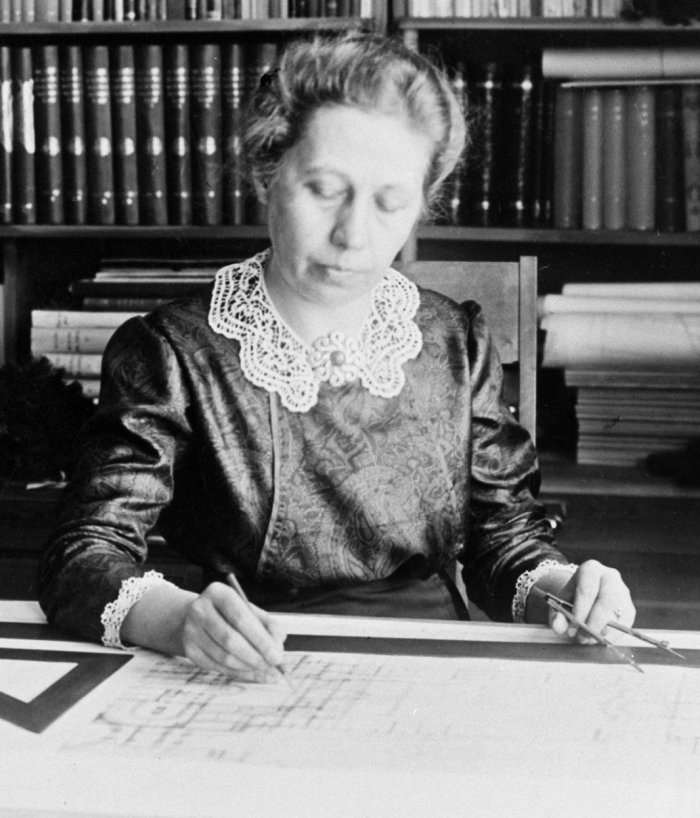As here in the northern hemisphere winter cedes to spring, not only is nature once again reawakening from its long repose but so too is the international museum community; and that, one senses, with more vigour than in the most recent springs where the Covid pandemic induced upsetting of the established order of the museal ecosystem, through both enforced closures and fundamental disruptions of essential exhibition development processes, dimmed somewhat the promise of the annual spring blush.
In spring 2022, one sense from wandering through the global museum landscape, the vitality, and for all variety, has returned to that landscape.
Which is to be welcomed, for little is as effective in helping us all broaden our minds, expand our perspectives, appreciate unseen associations, free us from prejudices, develop as human beings and as members of a functioning society, than a good museum exhibition. For while a good TV programme or a good podcast can inform, they tend to do so in definitives and in an unyieldingly linear fashion: they tell, they know, just how things were, are, will be. And in their telling tend to leave you bereft of tools of your own. A good museum exhibition in contrast gives you information but primarily bequeaths you a framework in which to develop your own understandings and positions, to question, to challenge, to expand on that which is presented; 'tis but a invitation to let your mind wander as it sees fit. And that in an environment which is devoid of time and space, where you are free to jump about as you wish, go back, rush forward. Stop.
noiɈɔɘɿib bɘɈɔɘqxɘnυ nɒ ni ɘvoM
Discover new, uncharted, paths.
Thus whereas you can leave a TV programme or a podcast with new information on the subject at hand; you can leave a well organised exhibition not only with new information on the subject at hand, but with your thoughts immersed in a completely different subject and with your mind stimulated, receptive, restless.
And broad, receptive, questioning, unihibited, objective minds freed of definitives are very, very, important at this moment in global (hi)story.
Thus, get thee to an exhibition!
Our five recommendations for exiting the space-time continuum in April 2022 can be found in Essen, Brussels, Stockholm, Linz and Helsinki.......
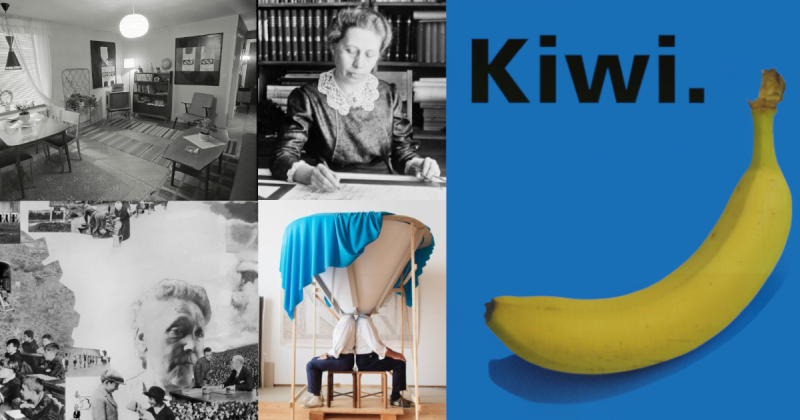
For over a century our urban spaces have been defined not only by architecture, transportation and parks but by advertising; for over a century wherever one has looked in any given city one has seen an advertising poster. A global reality that shows no indication of abating.
With the exhibition We want you! From the Beginnings of the Poster until Today the Museum Folkwang, Essen, aim to undertake a journey, as the title implies, from the proto-posters of the 18th century over the rise of the poster in the mid-19th century, its popular breakthrough in the 1920s, its battles with new media such as television in the mid-20th century and onto its contemporary existence as not just the endlessly large, and endlessly invasive, surfaces so beloved of global brands, but also as, and increasingly so, active, interactive, elements of our urban spaces.
And thereby a presentation which via some 300 objects, should, not only allow one to follow stylistic, formal, changes and developments in the advertising poster since the 18th century, changes in how messages are communicated to contemporary audiences, changes in what is considered acceptable and decent amongst society, changes in graphic art practice; but for all allow space for reflections on urban advertising, on the advertising poster as a component of contemporary culture, on our relationships with advertising, how advertising posters contribute to both our urban spaces and also contribute to our relationships with those spaces, how will new, invariably smart, technology alter those relationships. And how did the advertising poster become so ubiquitous and omnipresent?
Through politics we all have (nominally) a degree of influence on architecture, transportation and parks, and expect to be included in decisions on such, but do we have any influence on the fact we're all obliged to consume advertising posters on a daily basis? Should we? Do we want any? Or are we simply thankful for that which they bring to our daily lives and contribute to our cultural development?
Or put another way, while advertising posters may want us, do we want them?
After a century and a bit of coexistence it seems a question worth asking.......
We want you! From the Beginnings of the Poster until Today is scheduled to open at Museum Folkwang, Museumsplatz 1, 45128 Essen on Friday April 8th and run until Sunday August 28th. Please check the Museum Folkwang website for current information regarding opening times, ticketing and safety/hygiene regulations.
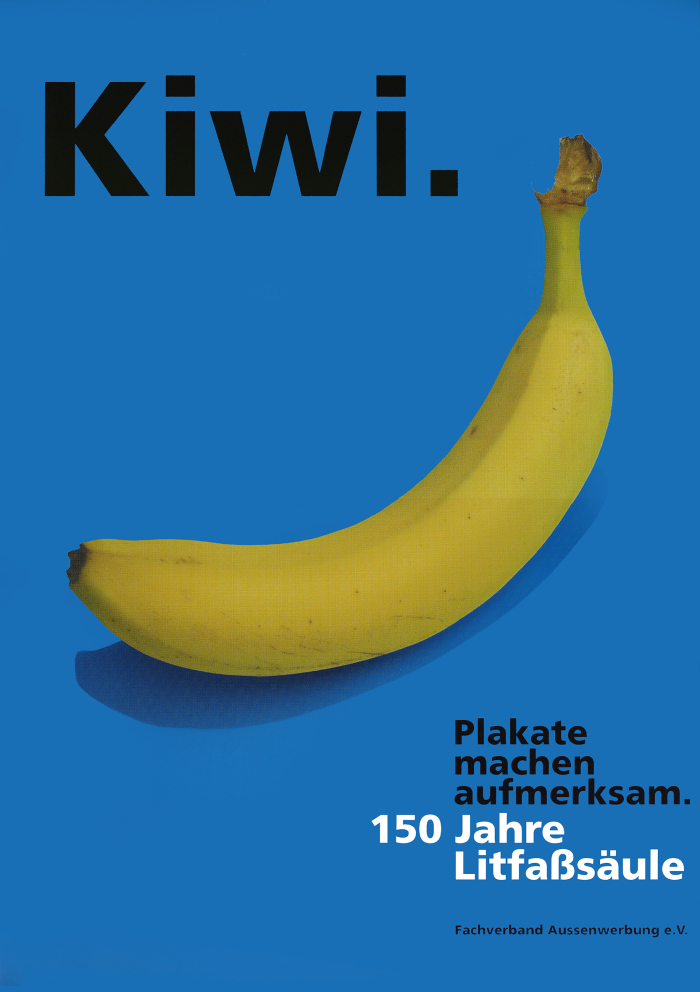
For all that Charlotte Perriand is popularly known as a furniture designer, and that, invariably, incorrectly and unfairly, exclusively in connection with Le Corbusier, she was a much more multi-faceted creative. Including undertaking a brief if intense sojourn into photography in the 1920s and 30s.
Premiered at the 2021 Les Rencontres d’Arles photography festival How do we want to live? Politics of Photomontage is based around three large photomontage commissions Perriand realised in 1936 and 1937, and which not only feature in their own rights as works of art, but for all form a basis, a tripod?, for an exploration of not only Perriand's photography, approach to photography and positions to photography, but also of Perriand's political and social activism; of Perriand's use of the medium of the photomontage, a most contemporary of mediums in the late 1930s, to present her personal understandings of, opinions on and responses to contemporary society, contemporary economics, contemporary technology, and to the question of how do we want to live? That central question in 1920s and 1930s architecture and design. And still a, the, central question in architecture and design.
Thus How do we want to live? Politics of Photomontage promises to offer not only an opportunity to reflect on how the basis of the question of how do we want to live has changed, or not, in the intervening century, but for all offers an opportunity for an alternative approach to exploring that which motivated and informed Charlotte Perriand and her work, and thus an opportunity to develop a better appreciation of a popularly known, but less popularly understood, and that unjustly so, creative.
Charlotte Perriand. How do we want to live? Politics of Photomontage is scheduled to open at Design Museum Brussels, Place de Belgique/Belgiëplein, 1020 Brussels on Friday April 1st and run until Sunday August 28th. Please check the Design Museum Brussels website for current information regarding opening times, ticketing and safety/hygiene regulations.
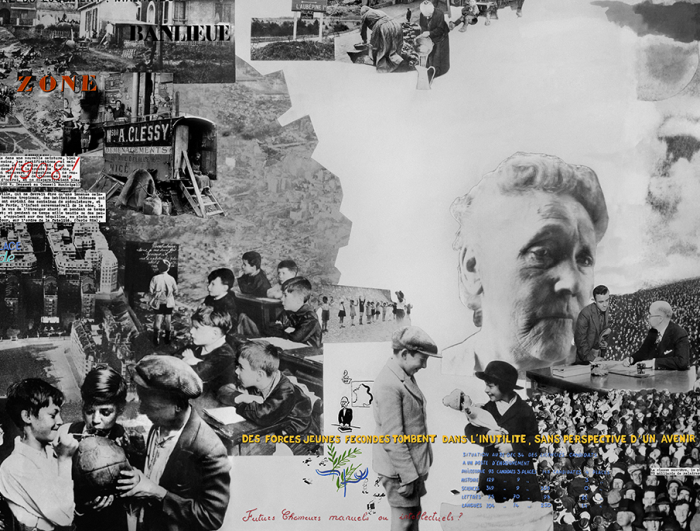
If we're being honest, which we do always try to be, until the Moderna Museet's spring/summer 2022 exhibition popped up on our radar we'd never heard of Björn Lövin. And we suspect that the majority of you haven't either. Which is, best we can ascertain, also one of the Moderna Museet's impeti for the exhibition The Surrounding Reality, to introduce Björn Lövin to as wide a public as possible.
Born in Falun in 1937 Björn Lövin was, by all accounts, one of Sweden's first conceptual artists, first achieving a wider fame in the early 1970s with the immersive installation(s) Consumer in Infinity and Mr P’s Hoard, a double installation which presented, juxtaposed, consumer goods and domestic settings, and, again by all accounts, in its contrast between the glitz of the store-front window and the sobriety of the interior of an "average" flat, posed questions on, for example, the promises of consumerism, the individual within the communal, the void between the haves and haves not of society, the basis of our definition of a contemporary "quality of life". Arguably not uncommon questions in early 1970s Europe, as the economic boom of the immediate post-War decades imploded. But particularly interesting in context of Sweden, a country that since the 1930s had?, has?, prided itself on its Folkhemmet, an understanding of the state's responsibility for individuals that underscored the Swedish welfare state and, in effect, understood Sweden as a house shared by all on a basis of parity and equity. A Folkhemmet that was, still is, very important in Swedish understandings of Sweden and Swedishness. But a Folkhemmet which Björn Lövin clearly felt was fundamentally broken in the late 1960s. And if it was, that means.......?
Promising a presentation of recreations of Consumer in Infinity and Mr P’s Hoard alongside recreations of Lövin's 1988 installation C – The Struggle for Reality with its focus on a society who rejected paid labour in favour of a life supported by automation and automated production - As if!!! Imagine!!! A society based on automation!?!?!? - and also L’Image – Exposition de Björn Lövin pour International Life Assurance Company ILAC, a installation presented at the Centre Pompidou, Paris, in 1981 and which features a family placed under continual surveillance by their insurance company - As if!!! Imagine!!! Being monitored by your insurance company!?!?!? - The Surrounding Reality should not only allow for some differentiated insights into the commercialisation, monetisation, of human existence, and on the relationships between culture and commerce in our objects of daily use past and present, but should also offer some differentiated insights into the realities of the (hi)stories of domestic life in Sweden beyond the popular soft focus snapshots.
But for all should allow for an easy introduction to an artist who sounds well worth becoming much better acquainted with.
Björn Lövin. The Surrounding Reality is scheduled to open at Moderna Museet, Exercisplan 4, Skeppsholmen, Stockholm on Saturday April 2nd and run until Sunday September 18th. Please check the Moderna Museet website for current information regarding opening times, ticketing and safety/hygiene regulations.
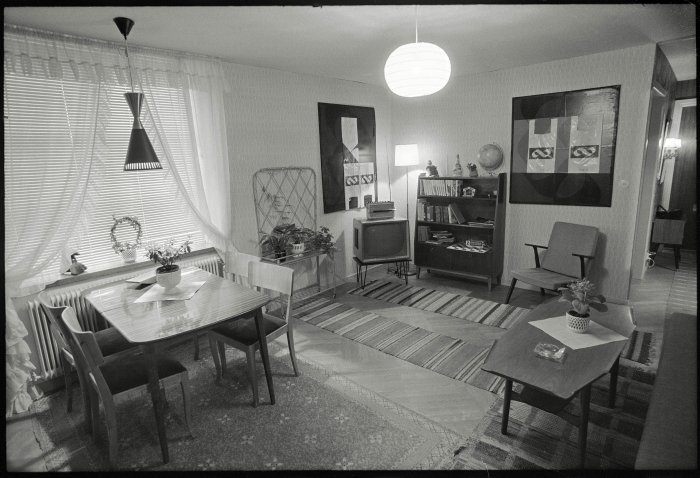
For all that Vienna is popularly associated with the pomp and seriousness of the Habsburg court, it has long been a den of subterfuge and revolution, not least in context of architecture and design: 'twas in Vienna that Michael Thonet first bent solid, unglued, wooden rods to chairs; 'twas in Vienna that Adolf Loos expressed his distaste for ornamentation by building a house without encasing the windows in external decorative elements, an act that deeply offended the Emperor. And 'twas in Vienna that in the 1960s Austrian architecture got radical. And inflatable.
Amongst the leading protagonists in the developments of 1960s Viennese architectural thinking was the collective Haus-Rucker-Co, a collective formally founded in 1967 by Günter Zamp Kelp, Klaus Pinter and Laurids Ortner, who were joined in 1971 by Manfred Ortner, and in 1973 by Carol Michels; and who as a collective challenged not only conventions of what is architecture, but, and not irrelevantly these days, our conventional, and conventionalised, ways of viewing the world around us, our ways of viewing society.
In 1986 Laurids and Manfred Ortner formally shifted from theoretical to physical architecture with the establishment of their own practice in Düsseldorf, the contemporary O&O Baukunst, and in which context they, together with their numerous colleagues, have realised projects as diverse as, and amongst a great many others, the Landesarchiv Nordrhein-Westfalen in Duisburg, the Königliche Porzellan-Manufaktur Berlin office building on Straße des 17. Juni and Vienna's MuseumsQuartier with its myriad cultural offerings. And subterfuge.
Promising a journey through the brothers' oeuvre past, present and (possible) future, in a scenography created by the Ortner's, Bis übermorgen promises to not only introduce the work and position of Laurids and Manfred Ortner, but also to both provide an opportunity to explore developments in architecture theory since the 1960s via two not irrelevant conduits, and also to allow one to pose questions of what happens when radical tendencies find themselves responsible for dozens of employees at various locations, how does creative practice evolve as the freedoms of old become increasingly challenged by the responsibilities of now.....
Bis übermorgen. Laurids Ortner & Manfred Ortner from Haus-Rucker-Co to O&O Baukunst is scheduled to open at the Francisco Carolinum, Museumstraße 14, 4020 Linz on Thursday April 7th and run until Sunday August 7th. Please check the Francisco Carolinum website for current information regarding opening times, ticketing and safety/hygiene regulations.
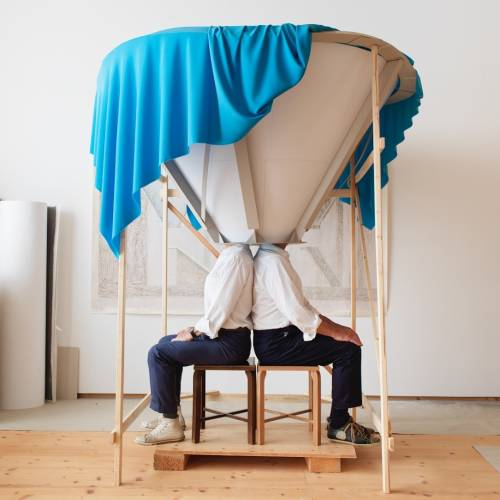
In the late 19th century Finland became one of the first nations to allow women to study architecture, and Olivia Mathilda "Wivi" Lönn one of the very first Finnish females to take advantage of the possibility; and following her graduation in 1896 Wivi Lönn became the very first female Finnish architect to establish themself in their own practice, and from where over the next 40 years she realised numerous major, and more minor, projects and became an important protagonist in Finnish architecture in the first half of the twentieth century. A fact tending to be underscored by her being awarded the title Professor in 1959, the first Finnish female architect thus honoured.
By way of celebrating what would have been Wivi Lönn's 150th birthday the Museum of Finnish Architecture is planning a year of activities throughout 2022 including a Wivi Lönn Festival and the exhibition Long Live Wivi Lönn!; an exhibition which in addition to exploring the life and work of Wivi Lönn also promises to explore the times of Wivi Lönn, using as it will Wivi Lönn as conduit to explore the realities of life and practice as a female architect in the first half of the 20th century. And that a most apposite conduit, and proposition: a dinner in 1942 attended by some 46 female architects in honour of Lönn's 70th birthday, and of Lönn's contribution to architecture in Finland, also marked the official establishment of Architecta, the Finnish Association of Women Architects: globally the first officially recognised association of women architects.
Which is a lot of firsts. Firsts which make Finland a good place to explore questions of gender and (in)equality in the (hi)story of architecture; and firsts which make Wivi Lönn an excellent guide on a path to more probable understandings of the (hi)story of architecture in Finland. And beyond.
Long Live Wivi Lönn! is scheduled to open at the Museum of Finnish Architecture, Kasarmikatu 24, 00130 Helsinki on Friday April 29th and run until Sunday January 8th. Please check the Museum of Finnish Architecture website for current information regarding opening times, ticketing and safety/hygiene regulations. And for details of the Wivi Lönn Festival (20th – 22nd May 2022)
